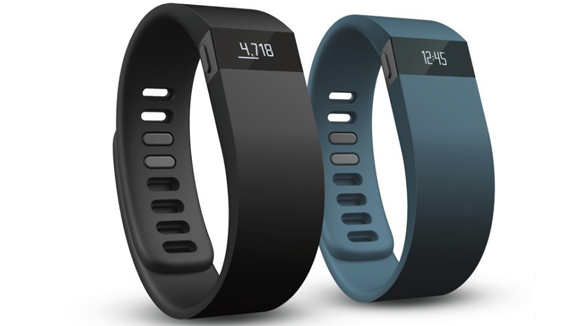TechRadar Verdict
Pros
- +
Comfortable to wear
- +
Tracks activity and sleep
- +
OLED a helpful motivator
- +
Altimeter for floor tracking
Cons
- -
Annoying clasp
- -
Proprietary charger
- -
Stingy Android support
Why you can trust TechRadar
Update: Fitbit Force has been recalled, so we updated our review to address its skin irritation issues and compare it to wearables that came out days after its release.
Fitbit has always been a few pedometer steps ahead of other activity tracking devices, but like the average person's fitness routine, Fitbit One and Fitbit Flex were still a work in progress. It was easy to be excited about in the beginning, but hard to stick with. Ironically, that's exactly how most people feel about the gym.
The startup company's activity and sleep tracking wearable gave almost 10,000 users rashes in the US and Canada, before it even hit Aussie shelves. A Fitbit Force recall in February has taken it off the market for the time being with the promise of a new version that people aren't allergic to.
Fitbit Force changes all of that. The startup company's latest activity and sleep tracking gadget marries the best features of the One and the Flex and throws in some smartwatch ideas too.
Sure, the still-available Fitbit One has most of these features, but its clip-on implementation means it is easy to lose or forget to use everyday. Nothing makes you drop a routine more than literally dropping and losing a thumb-drive-sized device.
Fitbit Flex remedied this by taking cues from the Nike FuelBand and Jawbone Up, fashioning the activity tracker into a wristband. Sadly, it lost a few features in the transition, namely the One's floor-tracking altimeter and OLED display.
The Fitbit Force is more like the Fitbit tour de Force, combining all of the best features with convenience so that everyone's interest in quantified self lasts longer than the average New Year's commitment.

Display
The OLED screen on the Fitbit Force is small, but it ends up being the biggest new feature on the wristband. It displays steps, distance, calories burned, very active minutes, floors climbed and the time.
These six numbers are six more than the Fitbit Flex gave us; it had five LED lights that indicated the percentage of steps taken through the day. Five little dots don't exactly motivate you to your goal like actual metrics do.
Seeing 8,000 steps when your goal is 10,000 steps might make you go outside and jog right before the midnight reset. It's much more encouraging to see this number climb in real time on your wrist. Four out of five dots doesn't inspire the same rise-from-the-couch drive.
The time, the only number that can't be sped up with activity, makes wearing the Fitbit Force even more practical. It doubles as a wristwatch and cuts down on checking a smartphone for the current time.
Fitbit finally keeps pace with the Nike FuelBand, which also offers the time, though Nike does it through a more futuristic-looking LED that spans the length of the rubber bracelet. The Force's OLED is less flashy, measuring just .75 of an inch by .375 of an inch. But it displays distance, floors climbed and very active minutes, three metrics the Nike band leaves out.
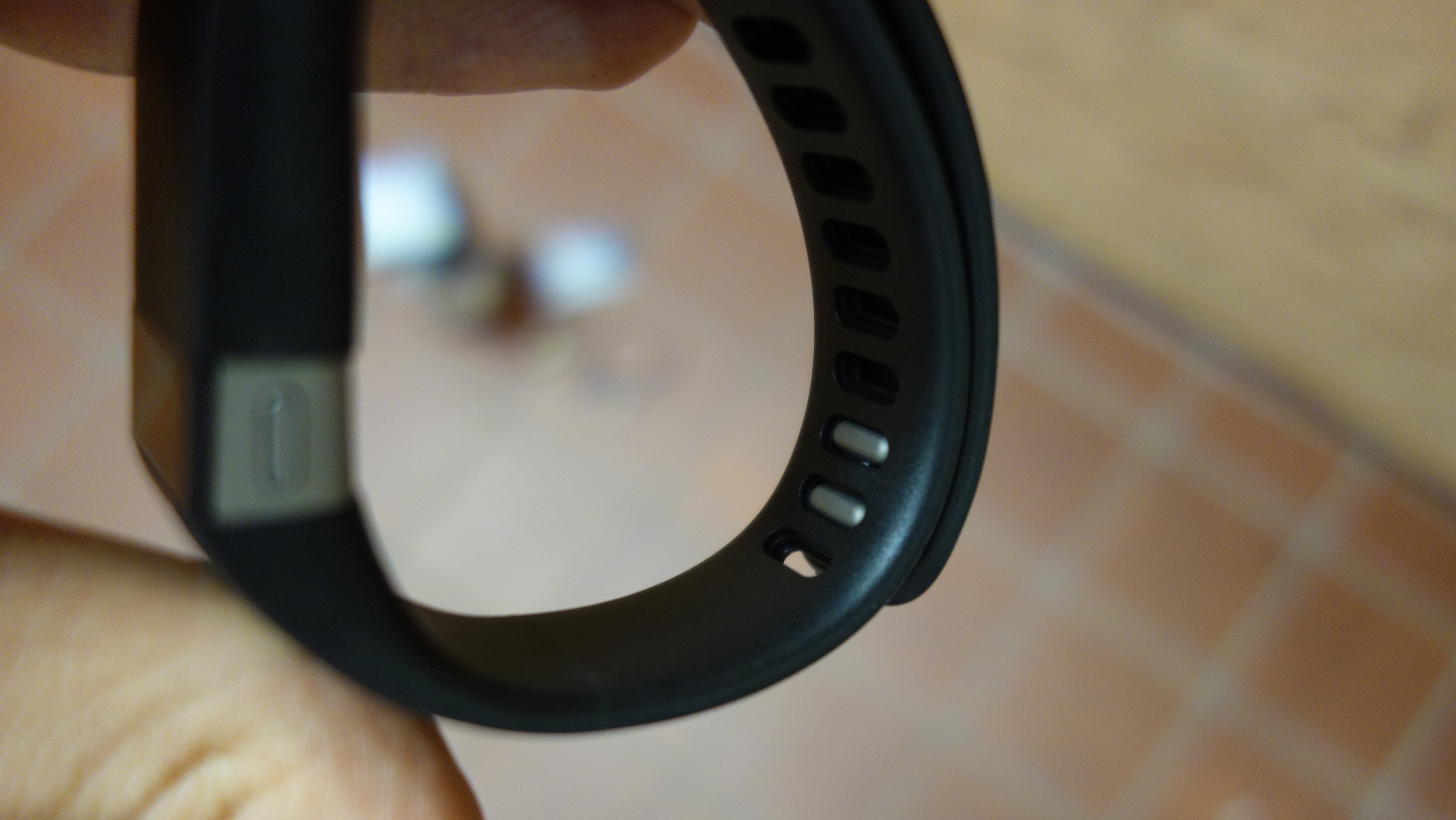
Skin irritation and recall
Fitbit Force was rushed to launch days before the Nike FuelBand SE and Jawbone Up 24 were announced, and the company seems to have gotten burned with a rash-resulting fitness band.
It said the allergic reactions were being experienced by a "small percentage" of users, which included the 10,000 who reported skin irritation and 250 more who received blistering. Rolling the dice with a small chance of itchy skin blemishes isn't the most appealing way to stay healthy.
Fitbit offered a refund of US$140 for the wearable, which is slightly more than the US$129.95 device was worth on store shelves. The company told techradar that this is to cover the sales taxes in all but the most tax-heavy states.
Fitbit CEO James Park said that a the company is "working on [its] next-generation tracker and will announce news about it soon." It remains to be seen whether or not this is a hypoallergenic version of the Fitbit Force or a completely new activity monitor with a host of additional features.
And now that we have the Fitbit Charge HR, we know exactly what he meant.
Design
Don't let the "Force" name fool you. Unlike going to the gym, you won't feel forced to wear the latest Fitbit wristband. Once you put the water-resistant Fitbit Force on, it's thankfully easy to forget about.
That contrasts with the Nike FuelBand, even though it also weighs 30 grams. The difference is that Fitbit Force inherits the previous model's flexible body and slightly wider design. The FuelBand is made of stiff rubber and is a little more concentrated on the wrist.
The Fitbit Force, which comes in two colours, black and slate, is also top-heavy. It thins out as it wraps around a wrist, making it look and feel more like a real wristwatch. That makes it easier to wear when typing compared to the evenly distributed weight of the Nike FuelBand, which looks like a less fashionable bracelet.
Comfort and style may seem like an afterthought compared to more tech-pleasing features like a bright OLED display and a floor-tracking altimeter. But if you don't feel like wearing a fitness device every hour of the day, chances are it's going to collect dust faster than the Wii Fit fitness board.
The only drawback to the Fitbit Force design is the clasp. Same as the Flex, it's hard to insert the pair of gray prongs into two of the nine oval holes at first. You almost need a third hand to make it happen. It does get easier with practice and the long battery life means taking the device off to charge isn't a daily chore.
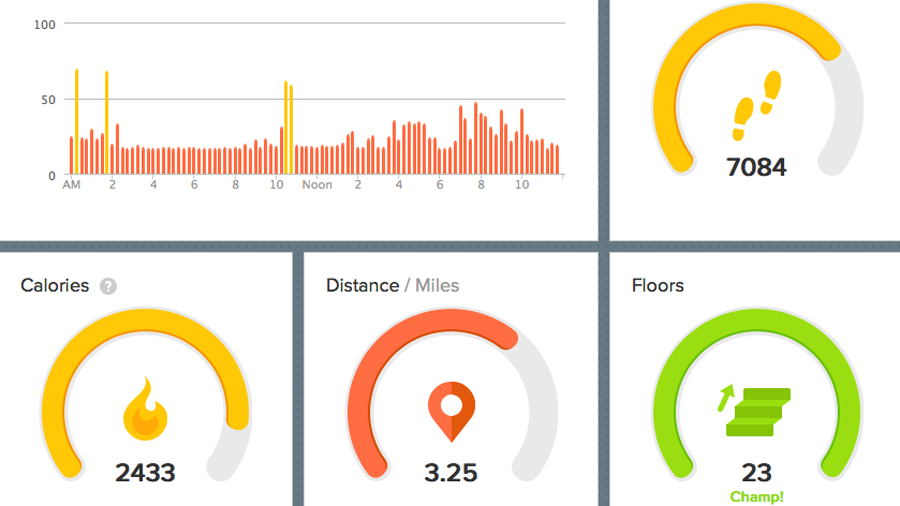
Interface
Fitbit Force tracks steps, distance, calories burned, very active minutes and floors climbed. The accuracy is along the lines of the Flex. It seems to round up the number of steps taken, inflating the total compared to the FuelBand and Jawbone Up. But it's less likely to count punching air as a step, so it evens out.
All of that doesn't matter if it doesn't compel you to continually achieve goals. The good news is that Fitbit's mobile app and web-based dashboard are the unsung motivators of this wearable technology. The Force makes the process of syncing even easier thanks to Bluetooth 4.0. The tracker and the easy-to-read progress charts are constantly connected without gratuitously running down the battery.
There are also tabs for seeing how Fitbit-owning friends are doing, weight tracking via Fitbit Aria or Withings scale, fun-to-earn badges and a food plan to keep track of diet and calorie intake. Every one of these charts is an automatic process except for the food plan.
You still have to manually log in the food you eat. Fitbit, unlike Nike, opened its API to partners, but there's nothing out there that automatically tracks food intake. Not even the HAPIfork cuts it here.
Even more challenging is the fact that the native food library for Fitbit isn't regionalised, meaning you either get the American, French, German or Spanish food database. You can work around this by using a third party app like My Fitness Pal, but it's still a manual effort, and frankly, you'll probably give up after a few days.
Sleep tracking
Not moving around is the goal of Fitbit Force's sleep tracking functionality. Pressing in the device's one-and-only button for a few seconds when in bed transitions it into a timer mode that begins counting up. When you wake up, holding down the button stops the timer.
Charting restless moments and deep sleep could be helpful, but the sleep tracker's accuracy is a bit suspect. This is something has been consistent in the Fitbit Flex and One. The Jawbone Up or even an inexpensive app like Sleep Cycle on a smartphones seem to do a better job of differentiating between REM sleep, restless moments and being wide awake.
All Fitbit devices with sleep tracking have "normal" and "sensitive" settings, the latter of which we recommend. The default normal setting often conveys the sleep you wish you had gotten the night before.
We'd also like a bit more evidence that the device is in sleep mode. Originally it seemed like we just kicked off a stopwatch (which we did in a way), and it took a trip to the manual to confirm that this was how you kick off sleep tracking.
The silent alarm
The returning silent alarm is the more useful sleep-related feature. The Fitbit Force wristband can vibrate and wake you up at a specified time without having to hear a nagging alarm clock.
That's extra handy if you are sleeping next to someone who doesn't have to wake up at the same time as you.
Waking up to the Fitbit Force's silent alarm is almost as if someone is gently tugging on your arm to get you to wake up. It's as peaceful as waking up early can get.
That's good and all, but if you happen to be someone who relishes a snooze button, you'll need to be careful you don't switch off the silent alarm by mistake.
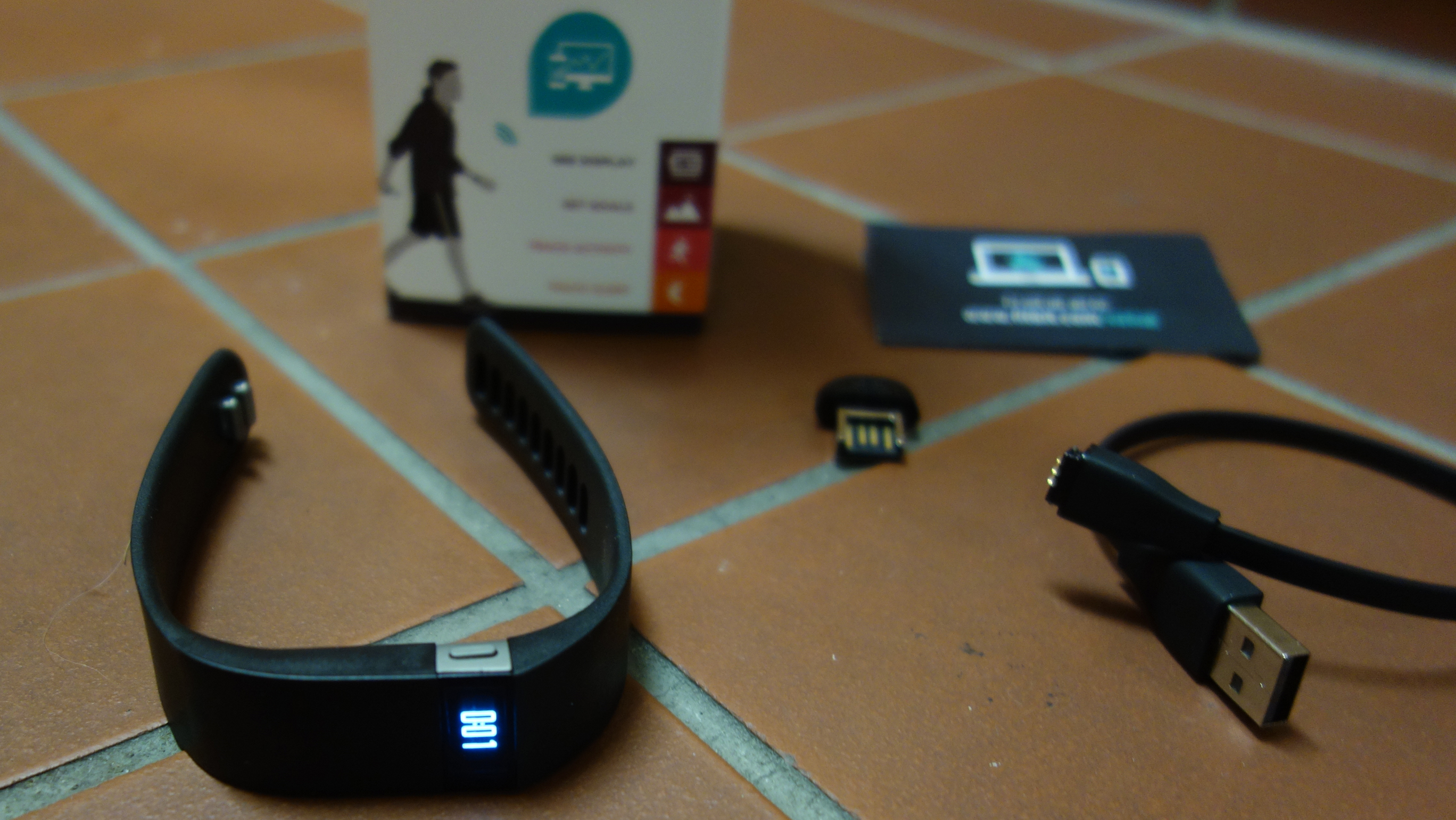
Battery life
Having Bluetooth 4.0 on board the Fitbit Force makes life easier because the low-energy protocol can constantly sync to the Fitbit app without requiring daily charges.
The Fitbit Force specs promise seven to ten days of battery life and generally that's what we found in our tests. It also fully charged within an hour. That bests what the our to five days from the FuelBand, though Nike's SE version is expected to match the 7 to 10 day figure.
The extended battery life is good because if there's one misstep with this device it's including a proprietary USB charging cable. It's too short and extremely easy to lose. You don't want to be carrying it around with you day-to-day.
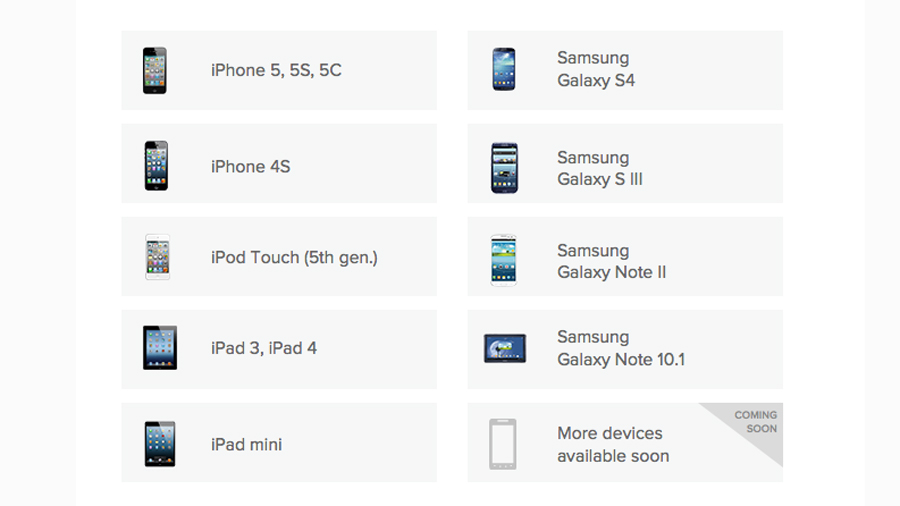
Compatibility
Burned by Nike's refusal to make FuelBand Android compatible? Fitbit works with four Google-powered smartphones and tablets in addition to the Bluetooth 4.0-equipped iPhone 4S and iPad 3 and up.
Samsung Galaxy S4, Galaxy S3, Galaxy Note 2 and Galaxy Note 10.1 are all compatible with Fitbit's line of wireless wristbands.
Everyone else has to sync the Fitbit Force with the Bluetooth USB dongle that comes in the box. It's another thing that can be lost and it's a little more cumbersome of an operation, but at least it does the job wirelessly.
For some reason, the Fitbit Force, like previous models won't sync natively with a computer that already has Bluetooth built in. That would have been less obtrusive than a USB nub.

Fitbit Force vs Nike FuelBand
Nike just announced the FuelBand SE, but Fitbit got out in front of its main competition with the Force. The sneaker-maker might not have enough fuel to catch up, either, as it merely tweaked its hardware.
Fitbit, with an OLED display to call its own, features more metrics on the watch face, includes an in-depth online dashboard and tracks quality of sleep - the new FuelBand only tracks time slept.
Its dashboard is a brilliant motivator, even if it's sleep tracking stats are a little off and the food plan is still a manual process. Nike doesn't include a way to track foods eaten, floors climbed, very active minutes, calories in vs out, weight, or sleep quality.
Fitbit trusts fitness app rivals like RunKeeper and MapMyRun and, more importantly, trusts users to tinker with the stats by logging custom activities. This is essential because swimming and bicycling don't count toward goals and metric totals otherwise. There's nothing worse than owning a FuelBand and not getting credit for these common calorie-burning activities.
Finally, Fitbit Force is more comfortable to wear thanks to its flexible and lightweight design over the harder rubber-feeling of the Nike FuelBand. It doesn't look like that will change when the Nike FuelBand SE comes out next month.
Notifications
Fitbit Force has more features than its competition, but the company is going the extra mile by adding incoming call notifications. It's officially crossing the threshold into smartwatch territory.
A Caller ID notification would be helpful for those moments when you're busy cooking food and your smartphone is in another room charging. You'll know if it's a call worth rushing over to pick up or one that you'd rather send to voicemail.
Fitbit promised to add smart call notifications to iOS 7 devices in time for Force's first firmware update, and despite the fact that we got to check it out in person last year, it was delayed. The only call notification that seems to be happening now is the Fitbit Force recall.
When it does come about, it's going to be for iOS 7 devices and iPhone 4S and up. Fitbit told us that "the team is always looking to expand the features on more devices and platforms," but that it's only destined for iOS 7 at the moment.
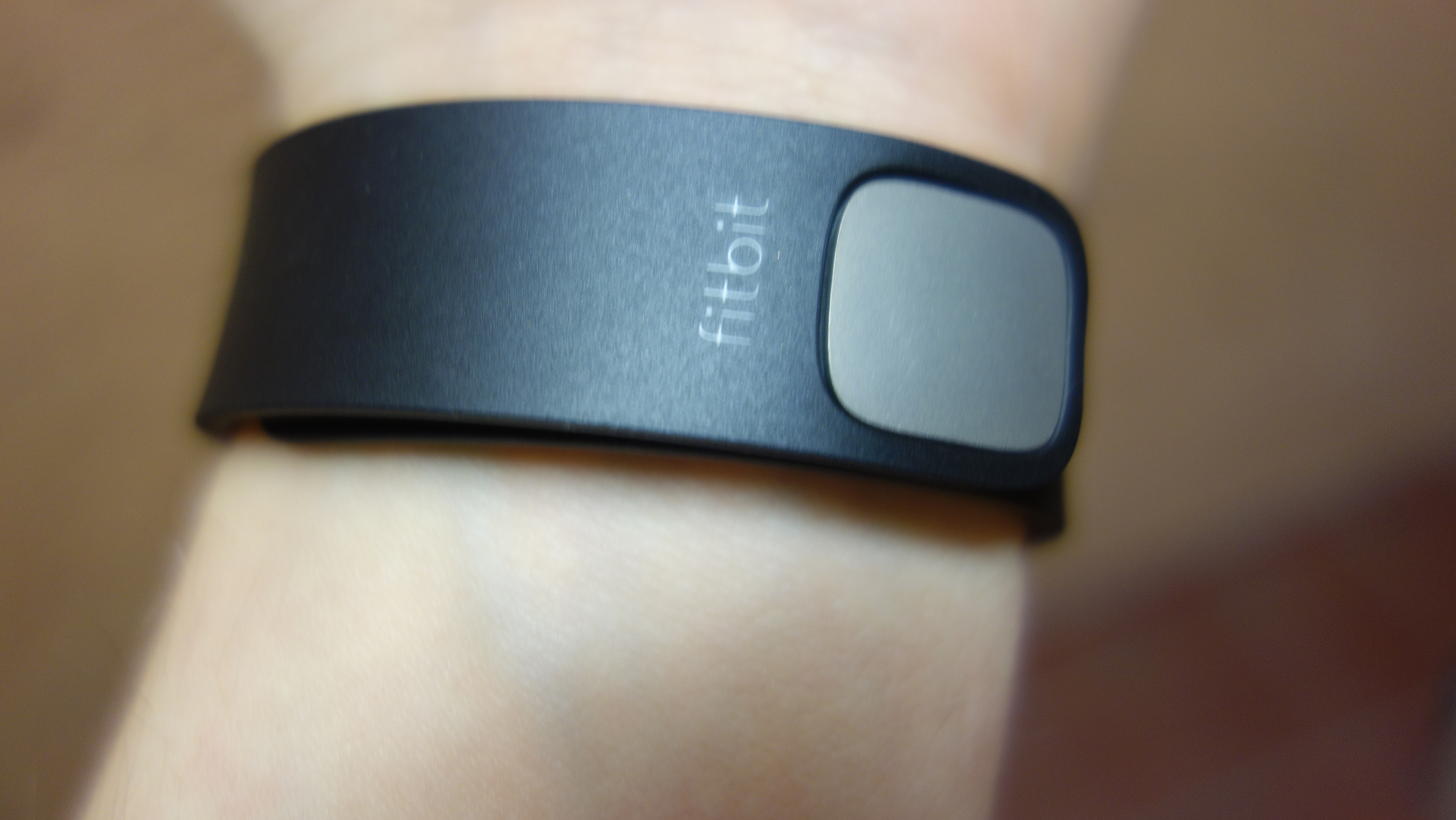
Fitbit Force is 10,000 steps in the right direction for an activity tracking device. It added a much-needed OLED display and floor-tracking features of the Fitbit One to the form factor of the Fitbit Flex. Separately, these two devices were imperfect. Now, in a comeback story worthy of the Hollywood biopic treatment, the startup has what it takes to challenge Nike and Jawbone.
We liked
For $169, it tracks more data than the FuelBand ($189) and lays out your activity history in an advanced dashboard that drives you to meet goals and earn badges. It supports a few Android devices and also trusts users enough to let them to log activities that weren't counted by the tracker. There's nothing less motivating than feeling cheated by a rubber band at the end of a weightlifting workout.
We disliked
Fitbit didn't get everything right. The sleep monitoring hasn't gotten any more accurate since we first tested out the Fitbit One, and the smartphone compatibility list has hardly grown. Matters are further complicated by the hard-to-button clasp and proprietary charging cable.
Verdict
Sure, there's a Fitbit Force recall, but we have heard from a several loyal owners who aren't turning it in for a full refund, a testament to how well the activity tracker works. It's flexible design gives it more of a relaxed fit than the Nike FuelBand SE and it has a screen and web interface, both of which the Jawbone Up 24 lacks.
Fitbit Force, without the possibility of a rash, is still one of the best ways move all 100,000 steps that are recommended for a single day. It's always-available metrics log more types of data than all of Fitbit's mainstream competitors with steps, distance, calories burned, very active minutes, floors climbed. Of course, none of this matters if you're susceptible skin irritation or don't want to risk it. In that case, the Jawbone Up 24 is a good alternative or you can sit on the bench until the release of an inevitable iWatch and Google smartwatch.
